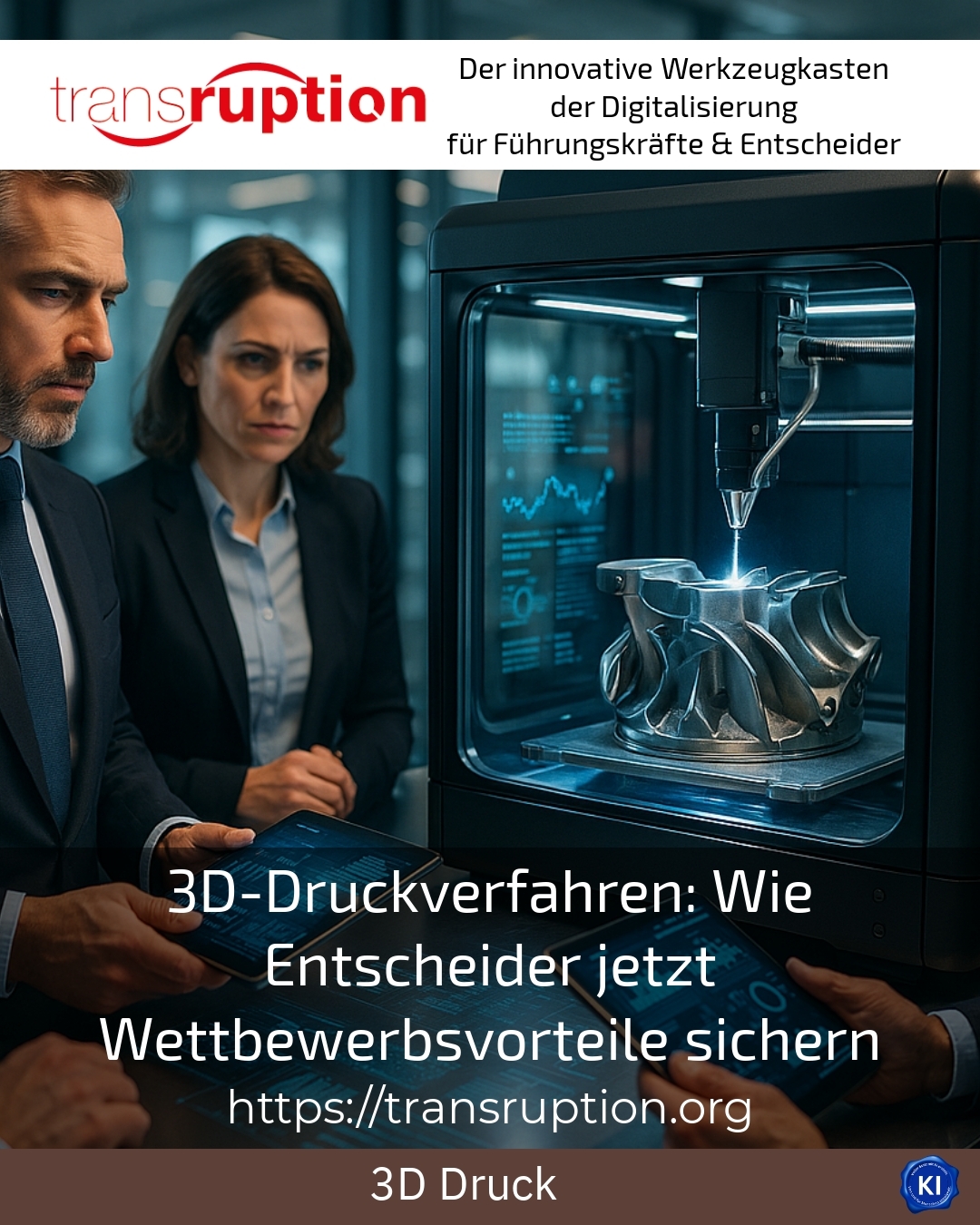In today's competitive landscape, innovative manufacturing technologies are becoming increasingly important. One of the key topics is the 3D printing process, which offers companies a wide range of opportunities for optimisation and differentiation. Decision-makers who get to grips with these technologies at an early stage can strengthen their market position and secure competitive advantages.
The diversity of 3D printing processes and their significance for decision-makers
The spectrum of 3D printing processes ranges from selective laser sintering (SLS) and fused deposition modelling (FDM) to advanced material jetting technologies. Each process is suitable for specific requirements and materials. For example, selective laser sintering enables the production of stable, functional components without additional support structures, which is particularly valued in the aerospace and mechanical engineering sectors[3][7].
The automotive industry also benefits from 3D printing. Here, prototypes are developed cost-effectively and lightweight, stable components are manufactured that contribute to improved fuel efficiency[4]. Multi-colour and multi-material processes also open up new design and functional possibilities, for example in electronics or jewellery[3][4].
BEST PRACTICE at the customer (name concealed due to NDA contract): A medium-sized mechanical engineering company uses a material jetting process to produce complex nozzle geometries in a single work step. This has halved development times and significantly reduced production costs.
Competitive advantages through targeted integration of 3D printing processes
Decision-makers should utilise the potential of additive manufacturing to speed up processes and use resources efficiently. The advantage lies in the flexible production of small and medium batch sizes, where customisation is possible[1][14]. The rapid production of spare parts is another area in which 3D printing processes create added value - for example in the manufacture of plastic components for older heating systems, where traditional supply chains often fail[6].
In addition, intelligent approaches such as the integration of artificial intelligence open up new ways to optimise processes. AI supports error detection and continuously improves print quality, which is particularly relevant in production[1].
This is exemplified by a logistics company that develops 3D-printed components for automated conveyor systems. These components allow dynamic movements and significantly reduce downtimes, resulting in noticeable competitive advantages[2].
BEST PRACTICE for the customer (name concealed due to NDA contract): A medical technology company manufactures customised implants using SLS technology to improve patient adaptation while reducing manufacturing costs by a third compared to conventional methods.
Practical tips for implementation in companies
Getting started with 3D printing processes requires a precise analysis of operational requirements. The following steps support decision-makers in setting up successful utilisation:
- Identification of suitable fields of application, e.g. prototyping, spare parts supply or small series production.
- Training employees to make optimum use of technical and creative possibilities.
- Investment in suitable hardware and software for process evaluation and integration into the production environment.
In addition, cooperation with experienced service providers and the use of pilot projects are helpful in gaining initial experience and minimising risks[14][18].
BEST PRACTICE at the customer (name concealed due to NDA contract): An aerospace company introduced metal 3D printing at an early stage. Lightweight components have significantly reduced fuel consumption and increased flight safety.
3D printing processes as the key to sustainable product development
Additive manufacturing not only supports efficiency, but also sustainability. Precise material application minimises waste and increases the possibility of reusing materials. In addition, the service life of products can be extended through the rapid production of spare parts[1][6].
Architects, for example, use 3D printing processes to produce models and innovative components that allow both creative freedom and resource conservation. In the food industry, additive processes are opening up new ways of producing sustainable, customised food[8].
In combination with an intelligent approach, this technological reach creates significant competitive advantages - whether through optimised processes, new products or improved customer experiences.
My analysis
The topic of 3D printing processes is proving to be an important lever for increasing competitiveness for both industrial decision-makers and innovative SMEs. The integration of these technologies offers opportunities to reduce costs, make production more flexible and achieve sustainable product development. At the same time, implementation requires targeted planning and expert know-how.
Decision-makers who are now engaging with 3D printing processes and strategically adapting their infrastructure are providing their companies with impetus for development and growth. The examples from a wide range of industries clearly show how diverse and practically relevant additive manufacturing already is today and how it will unfold even more potential tomorrow.
Further links from the text above:
Developments and forecasts for 3D printing in 2025
14 3D printing companies in Bremen
Large collection of all 3D printing processes worldwide
Areas of application for 3D printing
30 applications with 3D printing - simple examples
Guide to 3D printing materials
3D printing applications - overview & examples
Which industries use 3D printing - TRUMPF
For more information and if you have any questions, please contact Contact us or read more blog posts on the topic TRANSRUPTION here.
















